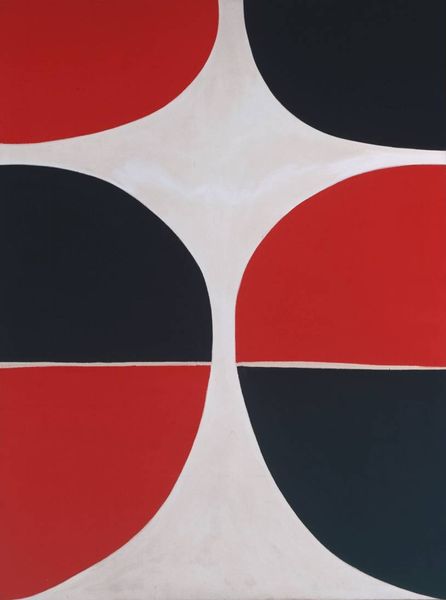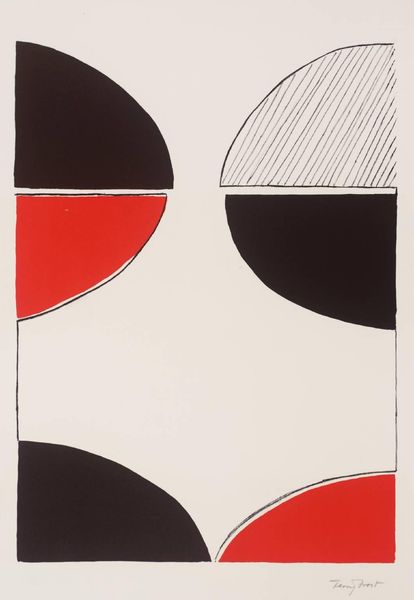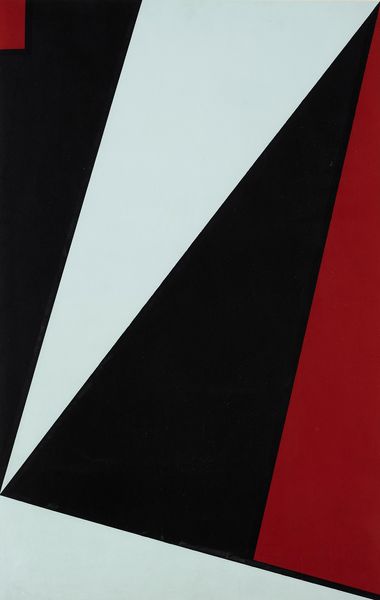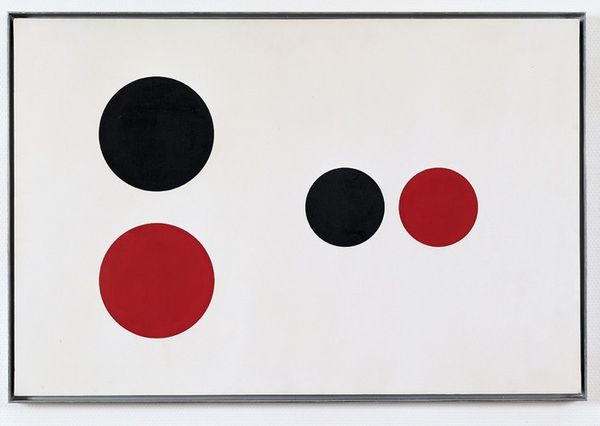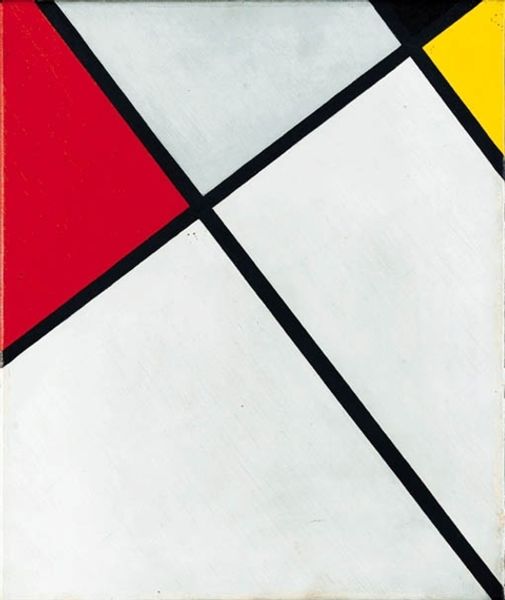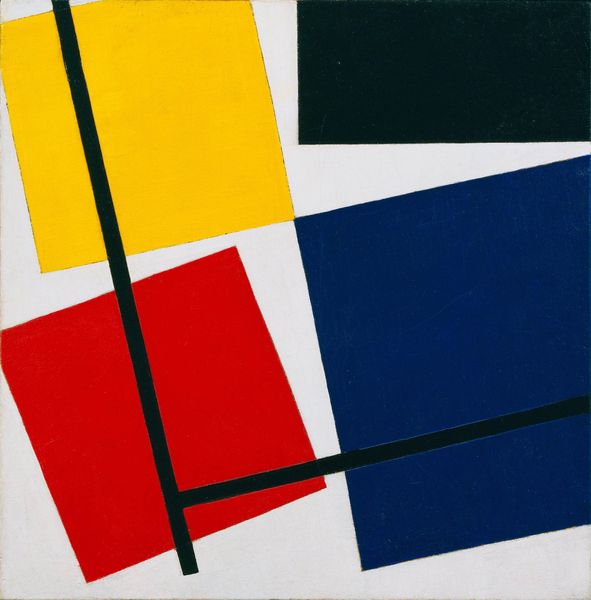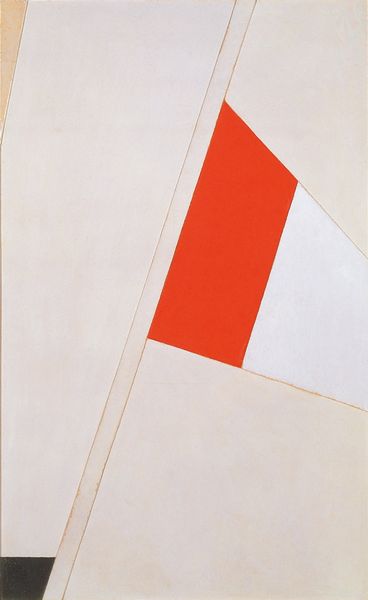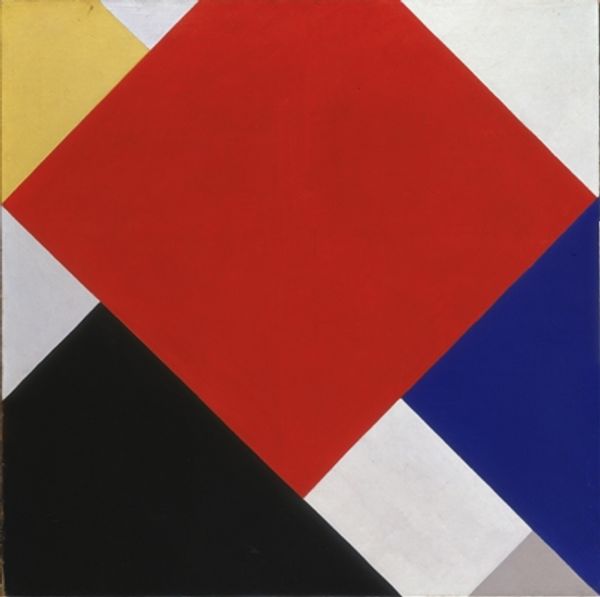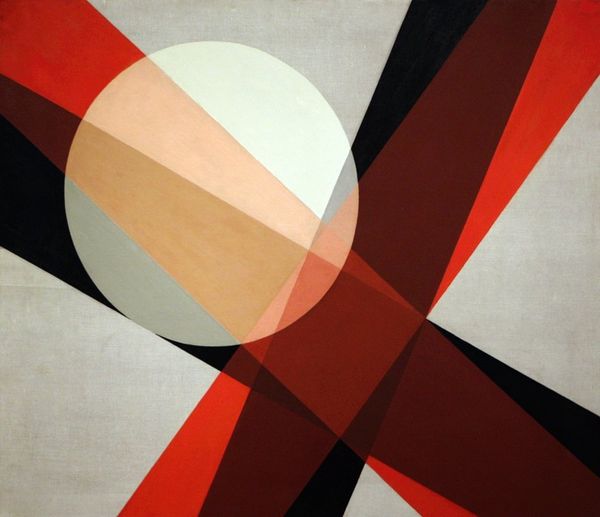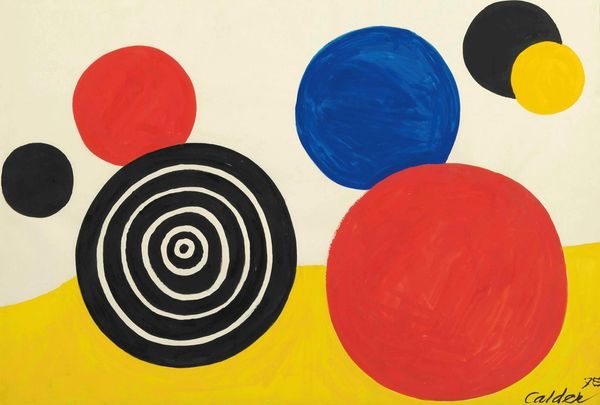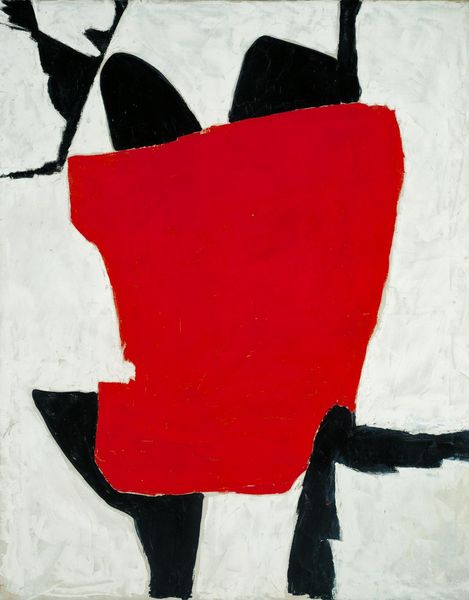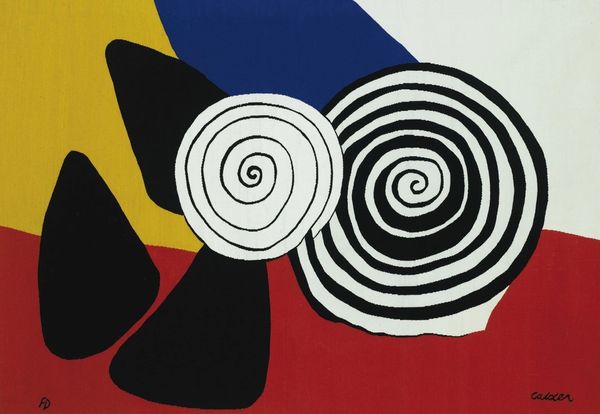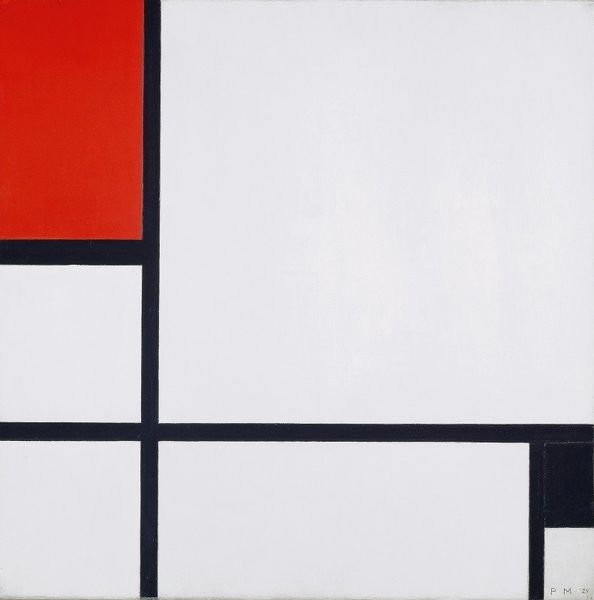
Dimensions: support: 2445 x 1835 mm
Copyright: © The estate of Sir Terry Frost | CC-BY-NC-ND 4.0 DEED, Photo: Tate
Curator: Terry Frost’s large-scale painting, "June, Red and Black," held in the Tate Collections, presents a striking arrangement of geometric forms. Editor: Whoa, it's like two opposing forces dancing! A bold, playful, and maybe a little confrontational vibe? Curator: The stark contrast of red and black, bisected by thin white lines, certainly evokes a sense of dynamic tension. The circles, or perhaps semi-circles, are loaded symbols themselves. Editor: Right? Circles hint at wholeness, cycles, the sun... then BAM, cut in half. Is it about fractured unity? Inner conflict made visible? My head swims with possibilities! Curator: It could also be that these shapes echo his earlier paintings which were concerned with the shapes of boats in harbors seen from above. He distills the essence of observed forms into pure abstraction. Editor: I dig it. Frost’s vision speaks volumes, even without spelling it out. It sticks with you. Curator: Yes, the painting prompts reflection on the interplay of opposing forces, and he really manages to capture this on a monumental scale.
Comments
tate 7 months ago
⋮
http://www.tate.org.uk/art/artworks/frost-june-red-and-black-t00829
Join the conversation
Join millions of artists and users on Artera today and experience the ultimate creative platform.
tate 7 months ago
⋮
In the 1960s the forms in Frost's paintings became much simpler and the colours more pure. This reflected the art of the period and, in particular, paintings by the American artist Ellsworth Kelly. Kelly produced shaped canvases painted in single colours, which Frost might have seen in America. Although paintings such as these are apparently abstract, Frost did relate the shapes to objects such as boats or women's bodies. A relief version of this work was sub-titled 'Mae West' after the famously curvy actress. Gallery label, September 2004
